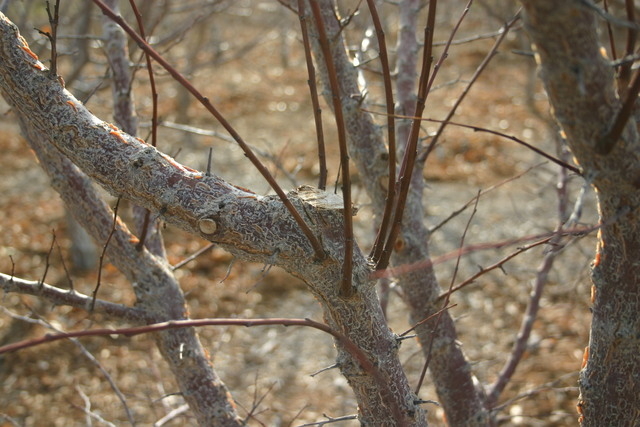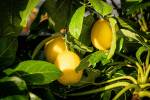Abundance of rain not always a good thing for plants
You are probably thinking this rainy weather was a good thing. It is and it isn’t. Let’s talk about some of the problems this rain has created for us now and over the next month. Expect an explosion of disease problems.
Tomatoes sprawling on the ground frequently have a higher percentage of fruit that rot than those kept off the ground. One popular way around this is the use of tomato cages.
Tomato cages keep tomato vines from laying on the ground and suspend fruit in the air where they are less likely to rot. The bad thing about tomato cages is they force all growth into a dense, upright tangled mess.
The center of this tangled mess, if left to grow without human intervention, is dark with very poor air movement. Tomato diseases love this environment particularly if it is wet and humid. Because of poor air movement and shade, the center of these plants tend to remain humid and dark.
Plant diseases love moisture, shady areas and older leaves, particularly if the plants have not been fed. If tomato plants growing in cages are wet from overhead sprays or extended periods of rainy weather, diseases can be a big problem.
Tomato plants grown in cages should have suckers removed from leaf crotches as they are growing. This thins the plant, and the remaining leaves get more sunlight and better air circulation. Tomato fungicides should be applied before things get really bad.
I am predicting there will be an explosion of fireblight, a bacterial disease, on Asian pears, many European pears and some apples. Asian pears are the most susceptible, but look for it on European pears such as Bartlett and even some apples. You might see it also on pyracantha and ornamental pear.
This virulent disease enters susceptible trees through the flowers, blown around during wet, rainy weather. Pears and apples were flowering when the first of these recent rains occurred. That was the clue that something was likely to occur this year.
It takes time for fireblight to incubate inside the flowers and spread, so signs of this disease will begin over the next couple of weeks. The first sign is the blackening and death of flowers and fruit and “hooking” of new growth. This disease spreads very rapidly and, if not controlled early, kills branches and possibly later, the entire tree.
When symptoms are first seen, use sanitized pruning shears to remove the infected area 10 to 12 inches below where it is seen. Always sanitize pruning shears with alcohol, bleach or Pine-Sol after each cut. Bleach rusts steel so oil the shears soon after using it.
Bag the infected plant parts and put them immediately in the trash. Do not compost them.
It is normal to see mushrooms coming from wood mulch and newly planted lawns after rains. Mushrooms are a close relative to fungal diseases and are not inherently bad. Mushrooms are signs that decomposers are at work and feeding off of decaying wood. They are generally not safe to eat so knock them over with a rake when you see them and don’t worry that these indicate plant disease.
Q: My fan palm has black spots on the fronds. Someone said it may lack iron. Or, is it getting too much water?
A: Without seeing what the fronds look like, I will assume it is a nutrient deficiency such as iron, which is common to desert soils. Nutrient deficiencies occur for a variety of reasons, not simply because it’s missing or unavailable in the soil.
First on the list of reasons is, of course, the soil. There is a lot of bad soil surrounding homes. Soils supporting the growth of palms should be amended with organic materials such as compost in a 1:1 ratio at the time of planting.
Most landscapers and homeowners don’t use enough compost or substitute a soil mix instead. Soil mixes are not compost. They contain mostly sand.
Compost disappears in about three to four years if the soil is covered in rock mulch and nothing is done to add more. As a result, the soil becomes compacted, drains poorly and begins suffocating the roots of plants like palms.
As roots die, these nutrient problems emerge as black spots on leaves even when fertilizer is applied. Black spots appear first on older fronds. As this condition progresses, it is seen on newer fronds.
People see palms declining in health so they give them more water. More water suffocates the roots even further and more roots die. In a slow death spiral, black spots on the fronds graduate to fronds turning yellow.
Because they are weakened, palms may become susceptible to diseases like fusarium. Because roots are dying, palms cannot pull nutrients like iron out of the soil and the plant becomes deficient.
Amending poor soils at the time of planting and covering this soil with wood chips instead of rock improves the soil and adds nutrients as it decomposes. Organics from decomposing wood chips applied as a surface mulch improves drainage, adds nutrients and helps drain water away from the roots. The soil health improves and more critters inhabiting the soil are seen, including earthworms.
Adding iron fertilizers to the soil may help in the short run. The same is true of iron applied as foliar sprays to the fronds. But water and poor drainage may be at the core of the problem and can only be corrected permanently with additions of organics like compost and wood chips as a surface mulch.
Other nutrients can cause black spots on the leaves such as potassium and magnesium deficiencies. The same approach will help with these nutrients as well.
Q: In January, you mentioned cutting back excessively long growth over 18-24 inches. I planted an apricot a couple of years ago and this year it is growing like crazy with many branches now exceeding 18 inches and still growing. Would you recommend cutting back excessively long growth now and throughout the summer if necessary?
A: Excessive growth should give you a clue about management. When fruit trees are growing like crazy, some of this can be part of their genetics and some of it caused by management.
Some fruit tree varieties are naturally more vigorous than others. Fruit trees are also affected by the type of rootstock they are grafted to. For example, the variety Katy apricot is more vigorous than the variety Gold Kist when grown on the same rootstock. Gold Kist is more restrained and tends to stay smaller.
Vigorous growth is also affected by management. Applying too much fertilizer or watering too often can produce excessive growth. Growth is good. But excessive growth, even when it is young, is not because it will be removed during the winter. That’s wasted energy by you and by the tree.
Summer pruning of excessive growth is a dwarfing technique used to help restrain the growth of fruit trees. It is done now and focuses on removing only new growth which is undesirable or cutting back excessively long growth.
When summer pruning, undesirable new growth is removed from the trees after the tree has made its “investment” in this growth. This is done normally in April and May. This robs the tree of stored energy that might be used for excessive growth and reduces excessive vigor of the tree.
When summer pruning, totally remove new growth growing straight up or vertically as well as growing straight down. When desirable new growth is excessively long, cut this new growth back to about 18 inches.
Desirable growth is somewhere in the middle between horizontal and vertical. Vigorous growth growing straight up is called a “water sprout.” When it occurs at the bottom of the tree then this growth is referred to as a “sucker.” Remove growth this as well.
Bob Morris is a horticulture expert living in Las Vegas and professor emeritus for the University of Nevada. Visit his blog at xtremehorticulture.blogspot.com. Send questions to Extremehort@aol.com.




























